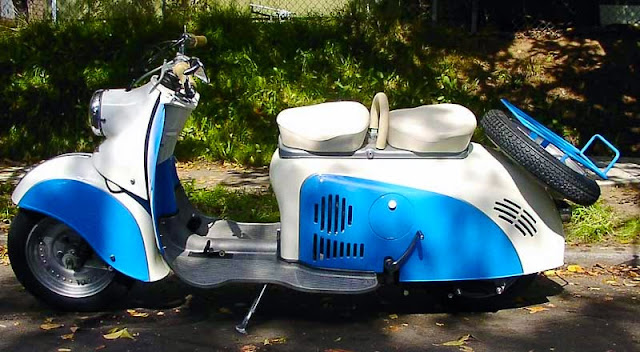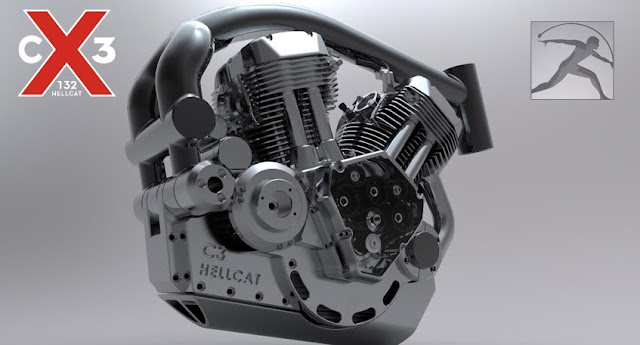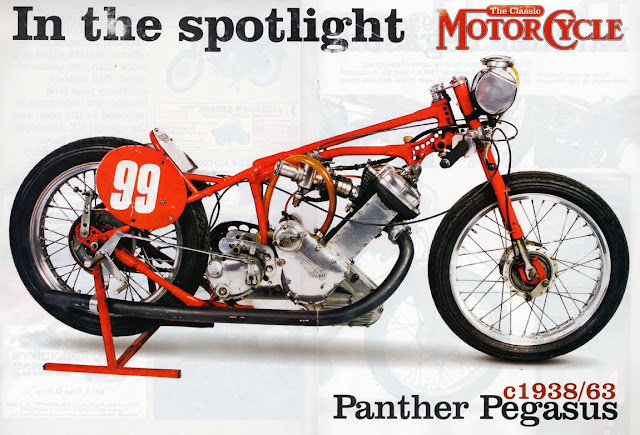Here are a few questions I asked him, with his replies regarding his amazing new creation, a World War II-era thumper massaged into a beautiful one-of-a-kind sidecar motorcycle.
bM: This is a beautiful bike, Szakál! The name of your company is surely reflected in the flowing lines of this machine. Before we get into your design, can you tell us about the motor? It's an NSU OSL251; a 242cc four-stroke single made in Germany with dry sump oil circulation that has maybe 10 horsepower. What can you tell us about the year and the unique properties of this engine? Did you make any modifications to it?
SA: Thank you! The engine was probably made during WW2. It's interesting that the cylinder-head has no oil line. It becomes oil vapor through the pushrod tube. The oil tank is integrated into the front of the crankcase. I only modified the looks with some copper plating, patina and polish for contrast, with brass screws, black paint and some holes in the primer case.
bM: Well, your work on the motor is amazing. The sidecar is also really nicely done and fits well with the cycle. The leather on the seat and around the inside of the car add an elegant touch that reminds one of the days when motorcycling was a gentleman's sport, and not dominated by hooligans like me and my drunken readers as it is now. Why did you decide to build a sidecar with this bike?
SA: It was not really my decision, although I like sidecars. The bike was custom-made to the wishes of my client.
bM: I'm sure he is happy. I understand that your sons help you with your motorbike creations. What contributions do they make with this build?
SA: I am a "weekend father" and my sons are only here part-time. When they are, they work side-by side-with me in the workshop. I try to teach them the value of creation and work.
bM: I bet there are many of us that envy your boys. It seems that everything has been custom-made on this motorcycle, from the interesting front end to the frame. Please tell us about some of your engineering and metal work on this bike. Is the front end a first, or a style that was once built by another company? What metals did you use in the construction of this bike?
SA: The entire bike is my own project. I've never seen anything like the front end I created. My metals were brass, copper, steel tube, and steel sheet metal. Most of the parts are made from solid brass, with a few - tail lamp, border of the gas tank, sidestripe of the box under the gas tank - built from copper sheet metal. The gas tank was maybe the most circuitous work on the bike, and took more than two weeks to complete.
bM: I've posted a photo of you sitting outside your shop door drinking a beer. What brand was it and is it your favorite beer? Can you tell us about Hungarian and/or Eastern European breweries you enjoy?
SA: It was probably Kozel. I like it a lot, but only in the summer. From autumn to spring I drink a brandy wine called "pálinka," which is a spirit made from different fruits. There are a lot of beers in Hungary, and if it's hot outside, a cold beer can save your life, whatever brand it is.
bM: Yes, I agree with all my soul. If it wasn't for beer, I'm sure to be a serial killer. What are you planning to do for your next motorcycle creation?
SA: It's a custom-made scooter in art deco style based on a GDR-made IWL from Berlin. It will be smooth and graceful and worthy the name "Marlene."
bM: I'm sure the scooter will be a looker. We'll look forward to seeing Marlene when you are done, Szakál. Thanks for taking the time to tell us about you and your work. We're very happy to meet you and hope you enjoy great success with Art Deco Motorcycling.
>>













